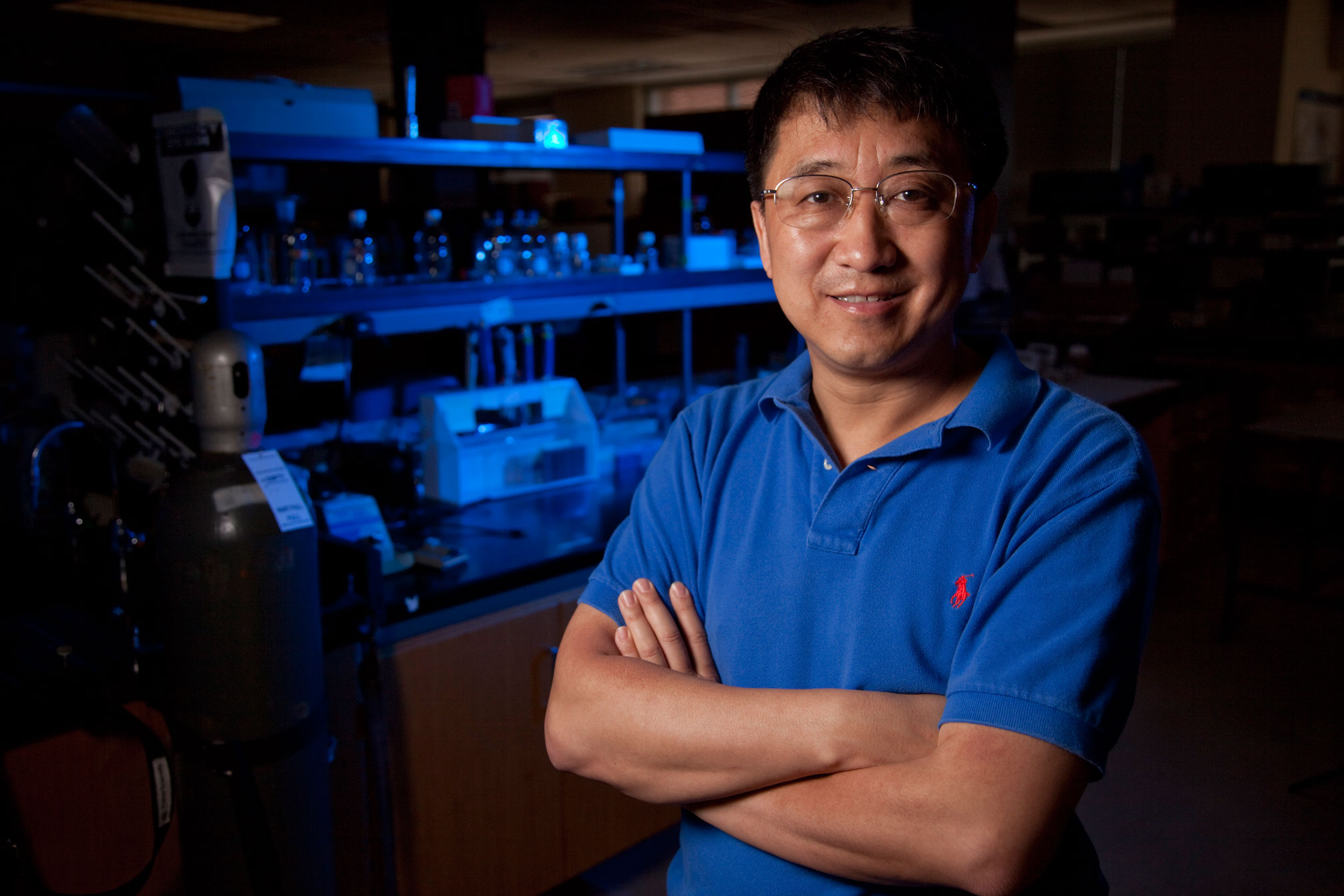Athens, Ga. – Chronic inflammation that induces low oxygen levels, or hypoxia, is a widely accepted cause of cancer development. However, the link between hypoxia and cell proliferation is far from clear.
A new study by University of Georgia researchers presents a model explaining the connection between chronic inflammation, low oxygen levels and the resulting cell proliferation that begins the cancer process.
“A switch in energy metabolism mechanisms—from the normal oxygenic respiration our cells use to process glucose into energy to a much less efficient, much lower capacity process called anaerobic fermentation—leads to glucose accumulation,” said Ying Xu, a Regents-Georgia Research Alliance Eminent Scholar and professor of bioinformatics and computational biology in the UGA Franklin College of Arts and Sciences.
According to the study, this accumulation of glucose and related signaling through the body leads to a reaction much the same as to that of damaged tissue, eventually triggering the cell proliferation that causes cancer. Specifically it leads to synthesis, export and fragmentation of hyaluronic acids, which can serve as signals for tissue repair. The study was published in the online edition of the International Journal of Cancer.
This new research builds on previously published studies authored by Xu’s research group establishing low oxygen levels as a primary cause of uncontrollable tumor growth in some cancers.
Consensus thinking on the causes of cancer has centered on genetic mutations, Xu said. But by using gene expression data collected from cancer tissue rather than cancer cell lines, as often used in experimental cancer studies, bioinformatics has enabled researchers broader insight into the metabolic driver as well as key facilitator for cancer initiation that could have great impact on treatment regimes for malignant cancer cells.
“When you compare statistics like the percentage of cured patients today versus 40 years ago, we can cure more cancer patients, though the primary reason is improvements in early detection,” Xu said. “Cancer in its early stages is easier to treat, easier to control.”
The focus on chronic inflammation, hypoxia and cell proliferation grew out of a need to understand the conditions connecting the three and why the body allows the growth of cancer cells in much the same way it repairs seemingly healthy cells. This led Xu to compare human tissue with that from a group of organisms that do not develop cancer. This group, including mammals (naked mole rat), as well as amphibians (frogs) and reptiles (turtles), shares an ability to survive in both aerobic and anaerobic environments. They are able to regulate their energy metabolisms according to oxygen availability, an ability to regulate energy demand according to supply never developed by humans.
“When the energy supply drops, our systems do not know how to turn off the energy demand accordingly,” Xu said. “So there is an energy gap under persistent hypoxia when we begin to take in excess glucose, which produces glucose accumulation.”
The model in the study outlines how the switch of energy metabolism to a less efficient process leads to increased glucose uptake within the cell. This glucose accumulation triggers the synthesis of hyaluronic acid, fragments of which outside the cell become signals for tissue injury and repair, leading to cell proliferation and angiogenesis, which starts the process of continuous cell proliferation—the very initial stage of the cancer process.
“It’s a completely logical reaction from within our bodies, and our system is triggered to believe that the tissue is damaged,” Xu said. “Cancer begins as a normal, if mistaken, mechanism for cell survival.”
The study presents a fundamental reimagining of how cancer begins and could provide the basis for complete rethinking of cancer treatments, especially for late-stage cancer drugs.
“Given my research career as a cancer biologist, I am particularly excited to see this important advance by Dr. Xu and his colleagues,” said David Lee, vice president for research at UGA. “The work points to fundamental metabolic changes that may be the primary cause of cancer in multiple tissues. If corroborated by further studies, it could suggest new approaches to cancer prevention and treatment.”
Other authors on this study are Chi Zhang and Sha Cao of UGA and Bryan P. Toole of Hollings Cancer Center at the Medical University of South Carolina. Xu has a joint appointment with Jillin University in China.
An online version of the study is available at http://authorservices.wiley.com/bauthor/onlineLibraryTPS.asp?DOI=10.1002/ijc.28975&ArticleID=1323464.


